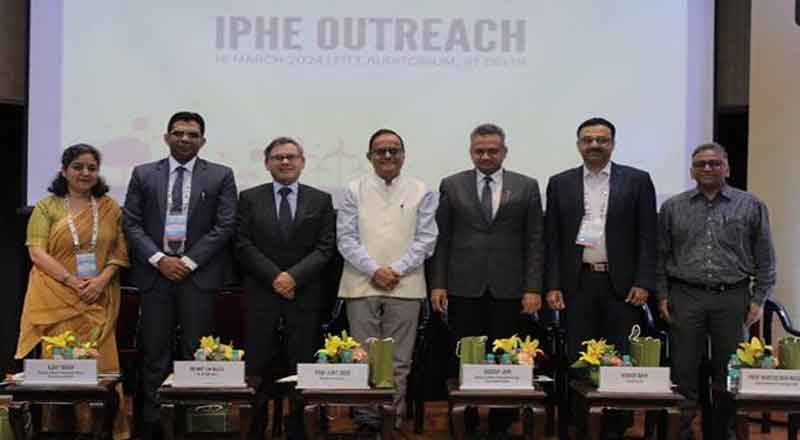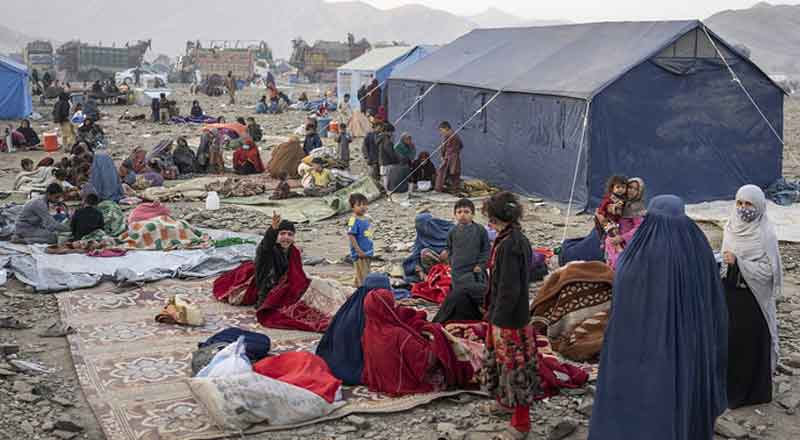In 2013, a catastrophic flashflood occurred in Uttarakhand, which wreaked havoc and destroyed the valley completely. Acres and acres of green verdant valley were washed out within minutes of the downpour. Devastation of unparalleled magnitude was caused and the angry river left villages upon villages decimated in its wake.
Soon after the disaster, immediate help did pour in from many different agencies. However the question that loomed large for many; was of long term survival…of picking up the pieces and finding the strength to rebuild again.
It is in this background that GAIL decided to intervene and implement Project Srijan, which means creation. Working with clusters of 10-15 villages, Project Srijan was aimed at creating models of holistic development that could be replicated, in other affected areas. Srijan adopted a multi- pronged strategy that addressed key issues of rehabilitation of communities, encouraging disaster proof construction technologies, livelihood sustenance and enterprise, increasing awareness about emergency response and facilitating other mitigating services for disasters. Project Srijan (creation) was undertaken for a period of 4 years, with the major components of the project being Capacity Building, Livelihood sustenance, Infrastructure/Asset Creation, Disaster management and Mitigation.
Identification of Beneficiaries: A baseline survey of almost 14000 beneficiaries was carried out by using Participatory Rural Appraisal (PRA) technique in 30 villages to know the then status of adopted villages in Rudraprayag area. Data pertaining to socio-economic, geographic & demographic including land, labour, livestock, Agri-allied, natural resources, employment, health, basic amenities, education & other services, disaster related were collected.
Need assessment was done in all the villages through surveys, physical verification, focus group discussion and interviews for direct intervention of the neediest survivors of the disaster. Three beneficiaries per village were selected who were the neediest one. As
Capacity Building: Special care was taken to embed and accord priority to disaster hit families, women and vulnerable groups at the design stage itself. The effort was to ensure benefit sharing by the most affected community members, poorest of the poor and most suppressed section of the society, our women folk. Since Self Help Groups (SHGs) of women are recognized as an effective tool for their empowerment in both rural as well as urban areas, women beneficiaries were organized into Self Help Groups. Out 34 SHGs and FIGs (Farmer Interest Groups) 14 were adopted and 20 were newly formed in Shrijan villages. The SHGs were into savings and inter loaning. FIGs had been formed for promotion of organic farming.
Asset Creation/Management: An important step in rehabilitation is to ensure that a similar natural disaster again would not wreak havoc of such great magnitude. Under project Srijan, GAIL provided a low cost alternative to expensive brick and cement, houses, an alternative that was sustainable and also eco-friendly. Bamboo houses combined with local materials were used to provide quick housing to the flood affected people.
GAIL’s Srijan initiative is trying to promote disaster proof construction technologies by addressing the problems at grassroot level. Training is being provided to local masons in advanced techniques to create stronger, better buildings. The up and coming Community Rehabilitation and Training Center in Sansari is an example of disaster proof technologies in architecture and urban landscaping. This center, that will soon be a hub for skills and enterprise training, is being built to withstand natural disasters.
Prior to the 2013 calamity, Rudraprayag was a bustling town- an essential stop for tourists en route to Kedarnath. Thousands of people whose livelihood depended on the tourism lost not just their homes but also their vocation in the blink of an eye.Training in new trades and creating livelihood opportunities is the cornerstone of the Srijan initiative.
With an aim to foster self -reliance, the initiative, harnessed traditional wisdom and familiar home grown technologies. One such example is the construction and training of Gharaats- Grinding and electricity generation units. Watermills (Gharaat): One gharaat was installed and operational in village Basti. Since traditional watermills were washed away in the floods, local people had difficult time in grinding flour. Womenfolk used to walk 3 to 5 km with a load of 35-40 kg wheat on their heads. They had to spend at least 3 hrs for grinding flour from farther villages. The new watermill set up in the area helped women save their time and energy. The gharaat had a subsidy component in which beneficiaries were being charged less for grinding as compared to market rate that helped women save money. The gharaat was made multipurpose which could provide electricity for domestic use also. Sensitization is central for the efficacy of long term solutions. Srijan employs a variety of means to disseminate information- from aam sabhas to posters, brochures, films- the outreach is rigorous and continuous.
Employment Generation: In order to create employment generation opportunities -production and sale of spice (Chili, turmeric, coriander powder), pickle (Awla, Lemon, Saljam, Raddish, Chilli, mix variety and Garlic), Malta squash, Pulses (Rajma, Soybean, Gahad), Mandwa Flour, Jhangora, Chausa, Honey and Handicraft related products ( mirror stand, bangle stand, key stand, mobile stand, fiber swing, flower pot, chandelier etc) had been initiated. Marketing linkages had been established with local markets, Haat Bazaar and Tourist route. Besides these, the services of ‘Society for Management of Mountain Environmental Resources’ (SMMER) had been engaged for marketing the products.
Having new opportunities closer to home also meant that the flow of migration for work was curbed.
Counselling: Although many villagers recovered from the traumatic event without professional intervention, some needed strong psycho-social support. It was then imperative to consider the different levels of psychosocial support that was needed by the disaster affected people. Initially the intervention in terms of counselling was started with 9 individuals from such households that experienced death. All 9 individuals were women and out of which 8 were widows and 1 woman had lost her both the sons. Moreover, 23 such traumatised individuals consisting of both men and women were counselled by Dr. Ritu Sharma, psychologist from Amity University. The counseling helped the victims understand their current situation and reactions, assisted in the review of their options, provided emotional support, and encouraged linkage with other resources and agencies that could assist them. Few sessions of child counseling were specially conducted for 32 school going children of traumatized families.
Sensitization and Awareness Building for Disaster Mitigation: IEC campaigns were carried through charts, posters, hoardings, banners and signposts to spread awareness regarding disaster management. Information was also passed on to Mahila Sabhas, Aam Sabhas, Van Sabhas and other Focus Group Discussions and workshops with women groups, youth groups etc. were held to ensure greater participation and awareness on disaster management/mitigation, environment conservation, health, sanitation and organic farming.
Setting up of school libraries/providing books for libraries where adequate infrastructure does not exist and distribution of school kits (bags, bottles, stationery, uniform etc. were also undertaken. 4151 books were provided to 30 schools. Additionally 157 children from 8 schools received school kits. Workshops were held at Agastyamuni to sensitise the Shrijan staff about the importance of IEC activities and the process of its implementation. A total of 53 IEC workshops/campaigns on disaster mitigation strategies, organic farming and health & sanitation were conducted in 15 villages. In these workshops/campaigns 855 villagers participated.
While the trauma of losing everything to the fury of nature has not completely erased, people are at least now better equipped to rebuild their lives. However there is a glimmer of hope in the valley. Just as darkness gives way to light, Srijan initiative helped the ravaged valley shed its long spell of despair with the breaking of the dawn of hope.




